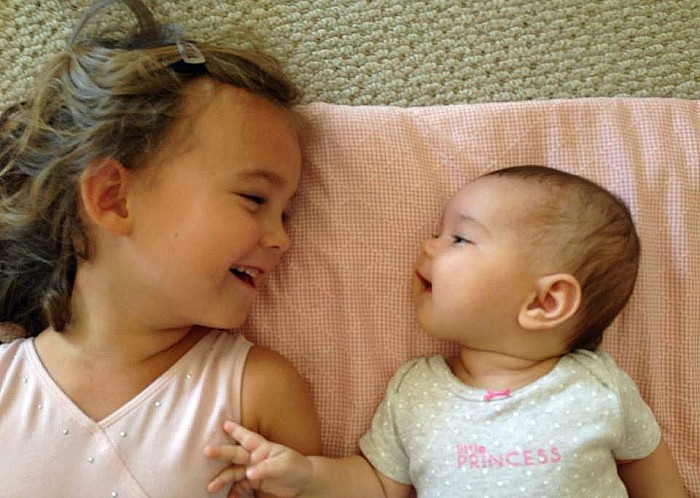The touch of someone we love calms, soothes
and decreases stress. When someone is in physical or
emotional pain, we move toward them with physical expressions
of warmth and comfort. Clearly, touch is an important
channel of communication and a vital mechanism of human bonding.
Louis Cozolino in The Neuroscience of Human Relationships: Attachment and the Developing Social Brain
Human beings need closeness.
 We are social animals built to live and work together. Closeness is a basic need of children. Crying is how children relieve stress and heal upsets. Tears literally wash stress hormones out of the body. When you combine these two fundamental aspects of the human condition by being close and attentive to your crying child, you help him know that he’s OK. He learns, after many hard cries in the shelter of your arms, that he will feel better afterwards.
We are social animals built to live and work together. Closeness is a basic need of children. Crying is how children relieve stress and heal upsets. Tears literally wash stress hormones out of the body. When you combine these two fundamental aspects of the human condition by being close and attentive to your crying child, you help him know that he’s OK. He learns, after many hard cries in the shelter of your arms, that he will feel better afterwards.
Any time your child’s sense of connection has been broken, he feels upset.
The resulting feelings create a further barrier to connection. A “Take it to your room until you get over it” style of parenting shames a child just for being human. Being close to your child through an upset helps him to know that you care, quickly reestablishes a warm, close connection, and gives your child a deep sense of wellbeing and the confidence to thrive.
When your child is upset, crying, or having a tantrum, respect his right to have feelings, allow him to cry and listen to everything, both what he says and what he shows you while he experiences the upset. Tell your child, “I'm sorry it's hard; I’ll stay with you while you’re upset.”
Light touch and comfortable warmth lead to increases in oxytocin and endorphins that enhance social bonds through an association with a feeling of well-being. Touch also leads to mild sedation, decreases in blood pressure, and aids in autonomic regulation and cardiovascular health. (Knox & Uvnas-Moberg, 1998; Weller & Feldman, 2003)
Dr. Stanley I. Greenspan is the Clinical Professor of Psychiatry and Pediatrics at George Washington University Medical School. A practicing child psychiatrist and supervising child psychoanalyst, Dr. Greenspan designed a developmental model that guides the care of infants and children around the world. The author and editor of over 30 books, Dr. Greenspan’s influential works include The Growth of the Mind, Building Healthy Minds, The Child with Special Needs, and The Challenging Child.
In one of his books, The Secure Child: Helping Our Children Feel Safe and Confident in an Insecure World, he recommends listening through children’s tantrums and increasing empathy towards your child, especially while setting limits. In Parenting by Connection, we call this process Staylistening. Dr. Greenspan explains it this way, “The natural tendency is to pull away from empathy and closeness when you’re involved in angry exchanges, power struggles, or limit setting. How can you empathize with misbehavior? You can empathize with how hard it is to learn new lessons, for instance, to see a new toy and not grab it. It is only when limit setting is coupled with empathy that your child will eventually wish to please you.” (2000; p. 72).
Crying means your child is smart.
Crying while in physical or visual contact with a loved one has not only proved psychologically beneficial for children, but has positive biological implications as well. Dr. Aletha J. Solter, Ph.D, author of The Aware Baby, offers research that crying has cognitive benefits for babies.
Her research has shown that crying (in the arms of an attentive parent) relieves stress and allows the brain to function more effectively, leading to improved social skills, self-esteem, intelligence and even improved physical health. She states, “Another long-term benefit of allowing babies to heal from early trauma through crying is that this helps them be more attentive and alert for learning…Allowing your baby to cry freely in your arms, when his other needs have been met, will help him form a habit of crying when he needs to, instead of suppressing his emotions. This will help him stay healthier, because pent up stress is a contributing factor to many illnesses, high blood pressure, diabetes–all are known to be at least partially caused by stress” (1989; p. 55). Louis Cozolino adds that, “healthy, intimate relationships consistently correlate with better cardiovascular health, immunological functioning and resistance to stress” (Robles & Kiecolt-Glaser, 2003).
Dr. Dan Siegel and Mary Hartzell emphasize this process in their book, Parenting from the Inside Out. In the same way that parents need to release their feelings of stress in order to function as good parents, children also need to offload their emotions. “Letting your child have his emotion and letting him know that you understand it’s hard not to get what he wants is the kindest and most helpful thing you can do for your child at that moment.”
Multiple sources confirm that crying should not only be tolerated but encouraged as a healthy way of expressing feelings and releasing stress. Having someone who cares about the child listen while he cries increases the positive benefits of crying. It promotes the parent-child connection children need to bounce back from adversity, confident and ready to learn again.
Time-in, not time-out
This is why Hand in Hand promotes “time in” rather than “time out;” putting the focus on connecting with your child when he is upset or displaying disruptive behavior, rather than isolating him from you. “That puts a lot of importance on parenting because that has a big impact on the way the brain becomes wired,” said Christopher Coe, a University of Wisconsin psychologist who has shown that infant monkeys deprived of parenting have deficiencies in key brain structures and suffer from numerous immunological disorders.
The stresses caused by bad experiences can actually affect genes, switching them on or off at the wrong times, forcing them to build abnormal networks of brain-cell connections. (Kotulak, 1997) A series of negative experiences, such as harshness or the isolation of a child when he is in need of closeness and comfort, affects the brain primarily through stress hormones like cortisol and adrenaline which are designed to prepare the body for fight, flight or freeze.
However, in a connected group setting where children are with supportive, caring adults who attend to their feelings, such transitions are more or less smooth: the upset occurs, the child revs up for fight or flight, the child reconnects with the safety of the parent or caregiver, and the body returns to normal hormone levels when the feelings have been expressed and the child’s sense of danger is over.
Staylistening is neuroscience in practice.
Staylistening teaches us how to help our children transition through the highly emotional alarm cycle. Staylistening helps parents recognize our child’s alarm signals, reconnect using our love and caring, allow the stress hormones to swiftly run their course through tears or trembling, and then encourages our child to come back into a natural balance and warm connection with us.
Download your free copy of Setting Limits with Children by Hand in Hand Parenting Founder, Patty Wipfler.
